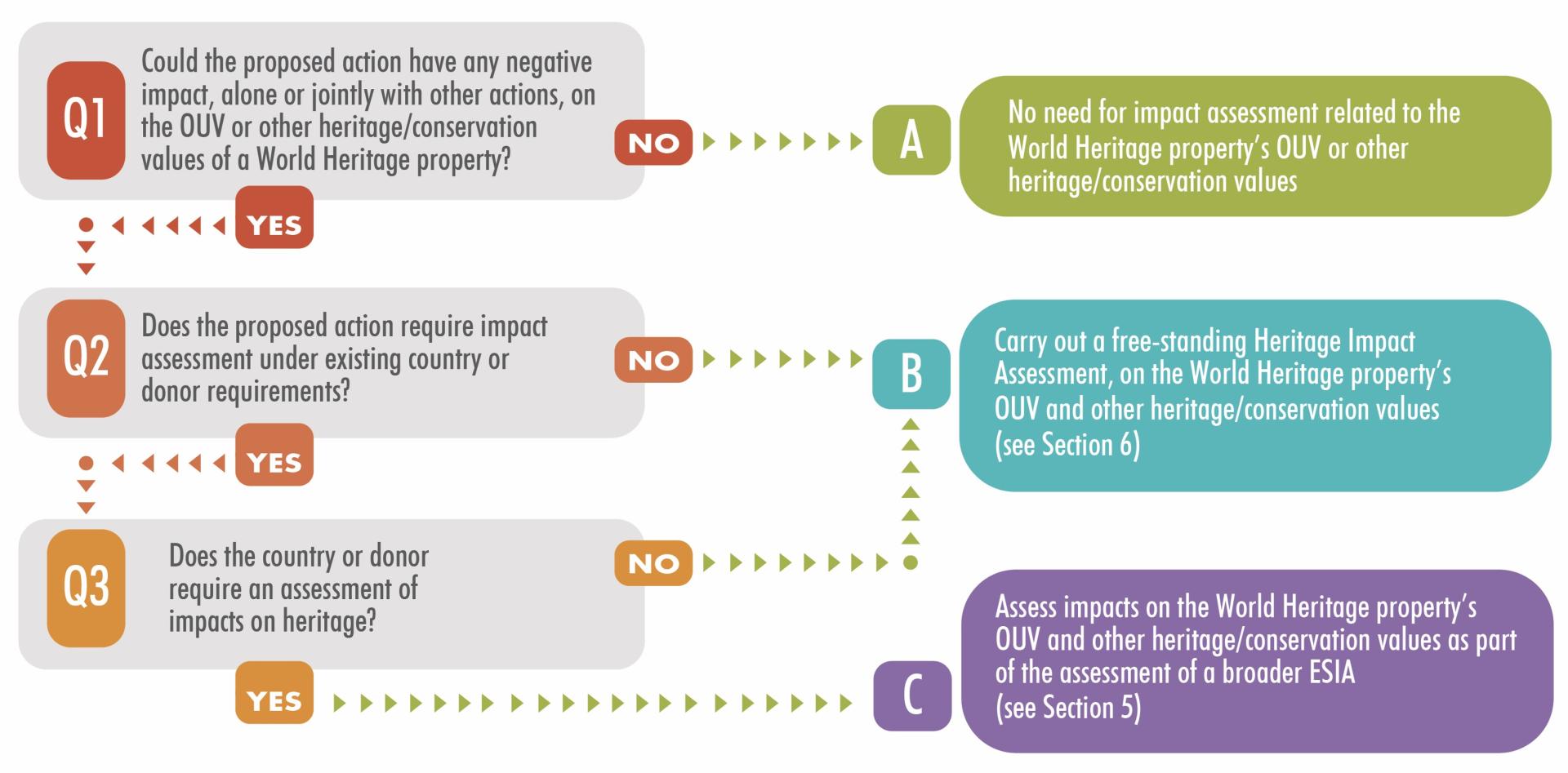Determining the type of Impact Assessment needed
Where a proposed action has the potential to affect a
World Heritage property
A cultural, natural or mixed heritage place inscribed on the World Heritage List and therefore considered to be of OUV for humanity. The responsibility for nominating a property to the World Heritage List falls upon the State(s) Party(ies) where it is located. The World Heritage Committee decides whether a property should be inscribed on the World Heritage List, taking into account the technical recommendations of the Advisory Bodies following rigorous evaluation processes.
When used as a general term, World Heritage refers to all the natural, cultural and mixed properties inscribed on the World Heritage List.
’s Outstanding Universal Value and other heritage/conservation values, either alone or jointly with other actions (‘cumulative impact’), then an assessment of the action’s effects on the OUV and other values should be carried out before the action can go ahead. It is the shared responsibility of the
National Focal Point
Governmental organization(s) primarily responsible for ensuring the implementation of activities related to the Convention within their countries, and which act as the communication channel between the Secretariat (UNESCO
World Heritage Centre
The UNESCO World Heritage Centre is a technical administrative body within UNESCO, established in 1992 and appointed by the Director-General of UNESCO. It acts as the Secretariat of the
World Heritage Convention
The Convention Concerning the Protection of the World Cultural and Natural Heritage is an international treaty adopted by the UN in 1972 that defines the kind of natural or cultural sites which can be considered for inscription on the World Heritage List for their Outstanding Universal Value for all humankind. Commonly known as the World Heritage Convention, it establishes how the international community as a whole is responsible for
the protection of such heritage and sets out the duties of States Parties in identifying potential sites that may be eligible for inscription onto the World Heritage List and their role in protecting and preserving them. By signing the Convention, each country pledges to conserve not only the sites situated on its territory that have been recognized as being of Outstanding Universal Value, but also to protect its national heritage and to be involved in international efforts to protect, conserve and promote the heritage of humankind.
, is the focal point and coordinator within UNESCO for all matters related to World Heritage, and ensures the day-to-day management of the Convention.
), national public authorities and other stakeholders.
, site management and relevant consent authorities of the State Party to ensure that the appropriate form of impact assessment is carried out, normally paid for by the project proponent.
World Heritage management authorities must understand the applicable impact assessment legislation and system of operation within their jurisdiction,11 so that the right form of impact assessment is carried out. If a formal assessment of the proposed action’s impacts on the heritage would already be required as part of local/national frameworks or donor requirements, then the assessment of OUV can and should be integrated into this wider impact assessment (see Section 5). Alternatively, for countries where impact assessment is not required, or where the action would not come under existing impact assessment requirements, a stand-alone assessment of impacts on OUV and other heritage/conservation values should be carried out (see Section 6). Figure 4.4 summarizes the process of determining what kind of impact assessment is needed.

Figure 4.4. Indicative flowchart for determining the type of impact assessment needed for actions potentially affecting World
Heritage
All inherited assets which people value for reasons beyond mere utility. Heritage is a broad concept and includes shared legacies from the natural environment, the creations of humans and the creations and interactions between humans and nature. It encompasses built, terrestrial, freshwater and marine environments, landscapes and seascapes, biodiversity, geodiversity, collections, cultural practices, knowledge, living experiences, etc.
properties.



